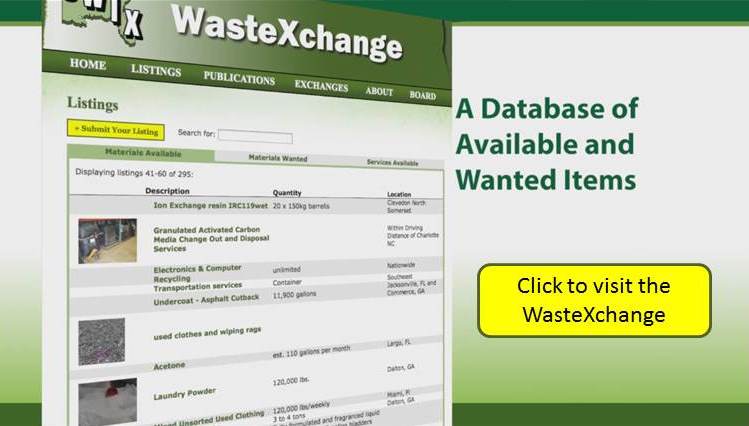How Your Business Can Cut Costs by Reducing Waste

How Your Business Can Cut Costs by Reducing Waste
Source: NCSU
The Importance of Waste Reduction for Business
By taking steps to reduce waste, a business can
- save money on supplies
- conserve natural resources and energy
- reduce current waste disposal costs and hedge against increased disposal costs in the future
- give customers what they want: “green” products and environmentally conscious businesses
- avoid adding to the environmental burden caused by producing and disposing of unnecessary materials
- boost employee morale by giving staff members an opportunity to work together on an environmental project
- reduce the risk of future liability associated with the disposal of solid wastes.
How to Reduce-Reuse-Recycle
Reducing Waste Production
The most direct way to cut your disposal costs is with source reduction: that is, by reducing the amount of waste your business produces. You have less to get rid of if you purchase and discard less material. By analyzing your business’ waste stream, you will probably discover that you can eliminate much of the waste your business produces.
Reusing Waste Material
A cost-efficient method of reducing waste is to reuse products in their present form. It is usually cheaper to clean or repair products so that they can be reused rather than to buy new or recycled ones.
Recycling
Many of the products that cannot be eliminated or reused can be recycled. Energy and natural resources are saved and environmental pollution is reduced when products are made from recycled rather than new materials. Your business can also cut disposal costs greatly by recycling.
Simple Ways to Reduce Waste
Here are examples of some easy ways to reduce the amount of waste that your business produces. Most of them involve simple changes in procedures and work habits.
Writing and Printing Paper
- Buy recycled paper.
- Keep mailing lists current.
- Reuse manila envelopes.
- Make scratch pads from used paper.
- Circulate memos, documents, periodicals, and reports rather than making or buying individual copies for all personnel.
- Use outdated letterhead for in-house memos.
- Proofread documents on the computer screen before printing them
- Save documents on floppy disks instead of making hard copies.
- Reduce the amount of junk mail you receive by writing to the Direct Marketing Association, Mail Preference Service, P.O. Box 9008, Farmingdale, NY 11735-9008 and asking that your business be removed from mailing lists.
- Use remanufactured office equipment.
- Use centralized files for hard copies.
Packaging and Shipping
- Order merchandise with minimal packaging, in concentrated form, or in bulk.
- Ask suppliers not to overpackage orders.
- Request that materials you order be shipped in returnable containers.
- Reuse foam packaging pellets (“peanuts”) and cardboard boxes or find someone who will.
- Set up a system for returning cardboard boxes and foam pellets to distributors for reuse.
- Return, reuse, and repair wooden pallets.
- Replace cardboard boxes with durable, reusable boxes for shipments to your branch offices, stores, and warehouses.
Equipment
- Use remanufactured office equipment.
- Invest in equipment that helps reduce waste, such as:
- high quality, durable, repairable equipment
- copiers that make two-sided copies
- dishwashing equipment (so that you can use durable dinnerware).
- Use rechargeable batteries.
- Recharge fax and printer cartridges.
- Install reusable furnace and air conditioner filters.
Landscaping and Organic Wastes
- Choose a landscape design that requires little maintenance and water.
- Compost grass clippings and leaves to make a valuable soil amendment (or make sure your landscape contractor composts).
- Purchase compost for use as a topsoil amendment (or request that your landscape contractor do so).
- Use a worm bin to convert nonfatty food wastes into high-quality potting soil (vermicompost).
Food and Personal Services
- Instead of paper, use cloth towels, tablecloths, and napkins.
- Avoid using disposable tableware when serving food and drinks to the public; use durable dishes, flatware, cups, and glasses. You will need a dishwasher, but the cost savings will quickly pay for it.
- Use cloth roll towels in the restrooms.
- Encourage employees to use durable cups and dinnerware for their food and beverages.
Keys to a Successful Waste Reduction and Recycling Program
Developing an effective waste reduction program for your business involves three main steps: planning, laying the groundwork, and carrying out the program as part of your business’ daily activities. Here are the tasks to be carried out at each step.
Planning and Preparation
- Study the waste stream and the costs associated
- Develop a waste reduction proposal and gain the support of your management team.
- Assess employees’ interest and encourage their support.
Laying the Foundation
- Select a waste reduction and recycling coordinator.
- Set goals.
- Decide on waste reduction measures, procurement policies, and what will be recycled.
- Locate markets for waste materials, or select a recycling service.
- Identify sources of recycled products.
- Design a waste collection and storage system.
Getting the Program On-Line
- Educate your staff.
- Promote and implement the program.
- Establish monitoring and evaluation procedures.
Buying Recycled Products
Collecting recyclable items is only the first step in recycling. The loop is not complete until these items are made into new products and purchased. By purchasing products that are (1) manufactured from recycled materials, (2) recyclable, and (3) packaged in recyclable materials, you will help create a stable market for recycled items. Look for the following items made from recycled materials the next time your company purchases supplies:
- office, copier, and computer paper
- stationery and envelopes
- tissue, hand towels, and toilet paper
- cardboard and paper board containers
- packaging materials
- lubricating and motor oil
- plastic carpeting, lumber, screens, and downspouts construction materials
- asphalt.
Purchasing used, refurbished items instead of new ones helps, too. Look for
- recharged laser printer cartridges
- retreaded tires support.
- used and refurbished office furniture or machinery.
______
NEED ASSISTANCE WITH EWASTE RECYCLING?
WE SPECIALIZE IN MATERIALS EXCHANGE
OUR OFFICE SERVES TO CONNECT MATERIALS PRODUCERS AND USERS
CONTACT 800-441-7949
_______
Posted in: Company News
Leave a Comment (0) ↓
